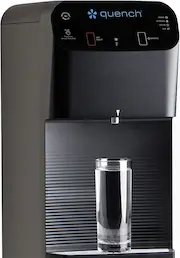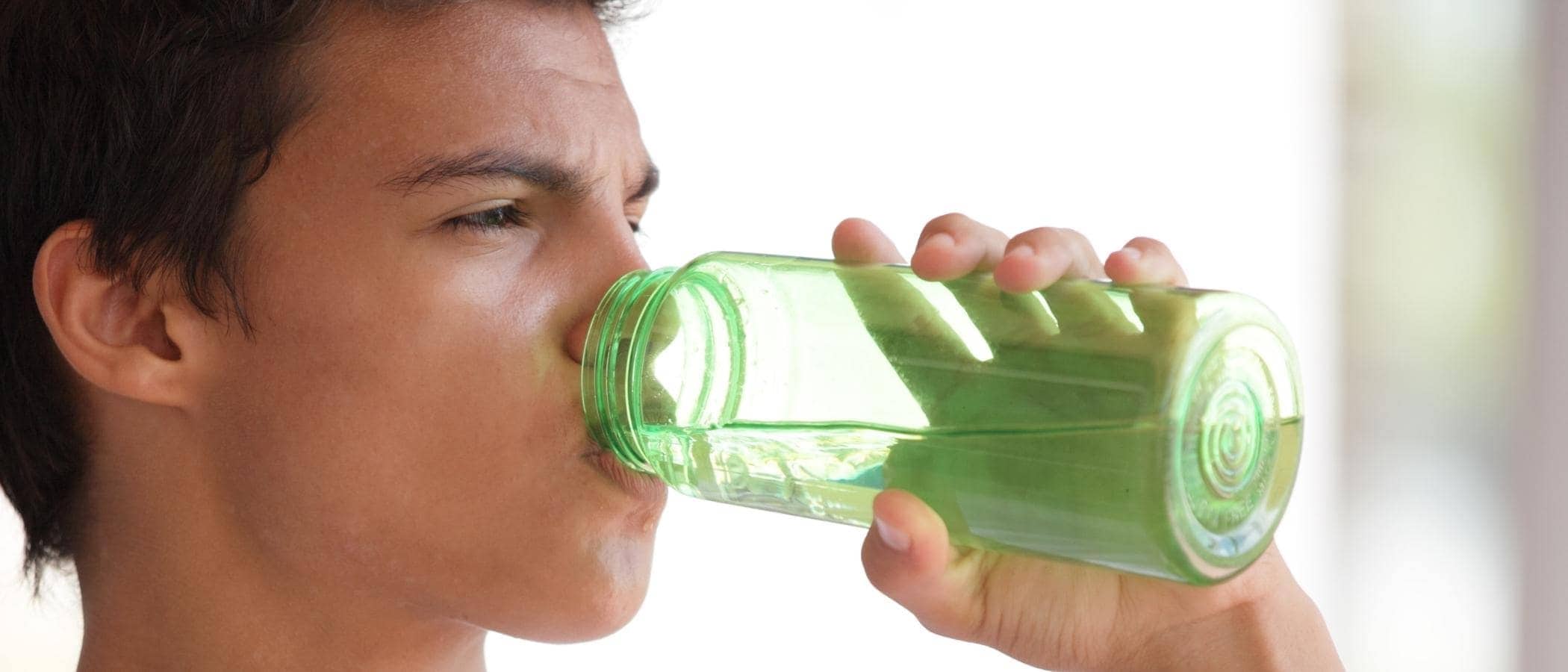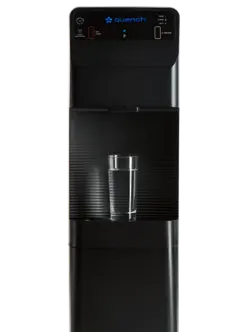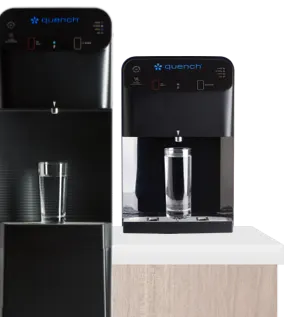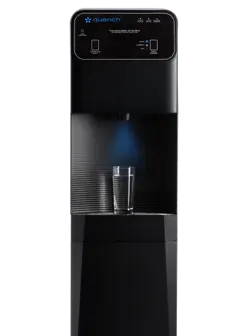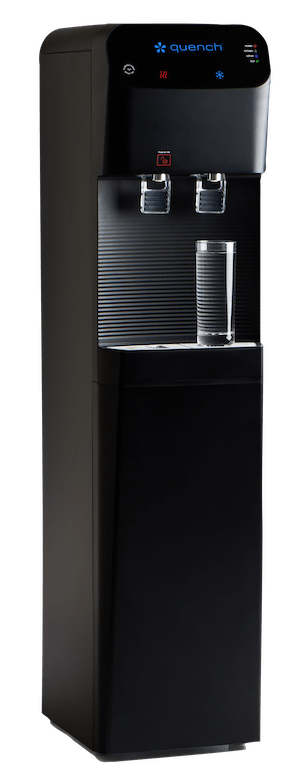This article was last updated on 9/1/2022
Adequate water intake is essential for individuals of any age — but children and teenagers are especially susceptible groups that parents and organizations need to consider. Raging hormones or the terrible twos might not be the only cause of a child’s grumpy attitude. Chronic dehydration ultimately has wide-ranging impacts on children’s and teenagers’ moods and other neurological functions, like their ability to learn and retain information.
With the impact of proper water consumption in mind, it will be critical for parents and businesses that work with younger kids to find ways to remove barriers to hydration — to promote and encourage sufficient fluid intake throughout the day.
Read on to learn more about the value of hydration and strategies to support greater water intake in children moving forward.
The Importance of Proper Hydration — For Children of All Ages
Before looking at the best ways for parents and businesses to encourage hydration, it’s critical to understand how much water children and teenagers should be drinking each day. The Child Health Oversight Committee (CHOC) says the recommended amount of daily water intake varies with age and sex. Older children, especially teenage boys, need more water than younger children. There’s an easy formula to determine how much water kids should drink. The CHOC says children should drink the number of 8-ounce cups of water equal to their age. The maximum amount of water is 64 ounces for children over 8.
For more information on a child or teenager’s specific fluid needs, take a look at the chart below.
| Age in Years | Number of 8 oz cups |
| 2 | 2 |
| 3 | 3 |
| 4 | 4 |
| 5 | 5 |
| 6 | 6 |
| 7 | 7 |
| 8 | 8 |
| 9 and older | 8 |
Why Are Good Hydration Habits Essential?
According to Medical News Today, the human body is made up of about 60% water on average — with this number reaching as high as 83% in infants and children. While the amount of water in the body is subject to change depending on age, sex, and hydration levels, it’s understandable how water can have such a significant impact on our health and wellness.
In fact, water plays a key role in:
- Regulating body temperature.
- Supporting strong mental health.
- Carrying nutrients and oxygen to cells.
- Increasing energy and mental focus.
- Helping dissolve minerals and nutrients to make them accessible to the body.
- Maintaining a healthy body weight.
- Protecting the body’s organs and tissues.
However, despite recognizing these health benefits, a study from the Harvard Chan School’s Department of Social and Behavioral Sciences suggests over half of adolescents in the United States experience chronic dehydration.
Moreover, the National Center for Biotechnology Information (NCBI) conducted a cross-sectional study of children and teenagers ages 6-19 which revealed that 54.5% of the researched population was mildly dehydrated. More than a quarter of the children and adolescents in the study reported drinking no plain water at all. While mild dehydration does not indicate an immediate medical concern, a child is likely to experience low energy and possible short-term memory loss if they’re not drinking enough fluids. This can quickly lead to chronic dehydration.
Recognizing the impact of hydration (or a lack thereof) is only the first step for organizations and parents working to promote greater water intake for children and teens. The real challenge becomes figuring out how to get kids and teenagers to drink more water moving forward.
How Your Business Can Promote Hydration in Kids and Teens
When children aren’t drinking enough fluids, it can seem reasonable to replace water with a sweeter, more flavorful beverage to make it go down easier. There are a lot of sugary drinks specifically targeted toward kids such as Capri Sun and SunnyD, while teens tend to choose soda and sports drinks. However, those kids gulping on delicious flavors are significantly more likely to experience chronic dehydration since drinks with lots of sugar reduce the amount of fluid a body can retain.
To ensure younger kids are drinking the right amount of water — to keep them feeling their best — businesses and organizations need to remove barriers to hydration. Luckily, there are a few effective strategies to consider that can help you get children and teens to drink more water, even if they’re reluctant to do so.
1. Consider fluid-filled foods
Supplementing drinks with something more solid can be an effective option for improving hydration in children and teens. Parents, teachers, facility managers, organizations, and institutions working with children can introduce foods like fruits, vegetables, and soups along with other healthy drinks like tea as great alternative sources of hydration.
2. Speak with education providers
Considering how much time kids and teens spend in the classroom, schools can have a considerable influence on their hydration levels. Some schools are not able to provide clean tap water because of older plumbing or lack of filtration. Administrators can make sure they provide clean and filtered drinking water in the cafeteria and throughout the school campus without stretching their funding by switching to a Quench bottleless water cooler or sparkling water machine. This will give students access to an endless supply of clean, great-tasting drinking water whenever they need it.
3. Steer children away from sugary drinks
While the consumption of most fluids can improve hydration, sugary sodas, and drinks often contain caffeine, a natural diuretic, which drains your body of fluids. Not to mention the added calories can negatively impact other aspects of physical health. It’s best to stick with water for children when you want to keep them well-hydrated.
If you work for a school, camp, or daycare, look into a flavored and sparkling water machine such as the Bevi machine brought to you by Quench. A flavored and sparkling water machine can satisfy sweet tooth cravings without added sugar or calories. Click here for tips on how to get kids to more drink water at home.
4. Provide children and teens with a reusable water bottle
The increasing awareness among the population of the hazardous effects and potential health consequences of non-reusable bottles has led to substantial growth in the reusable water bottle market, according to Verified Market Research. Whether you’re a concerned parent or an organization dedicated to supporting the youth, you can help children and teens join the trending change toward sustainability, while encouraging hydration, by providing them with reusable water bottles.
When getting kids to drink more water starts to get tricky, you can even turn it into a game. Get your child used to carrying a reusable water bottle and challenge them to drink a certain amount of water each day. Every time they meet their weekly goals, offer them a small treat like 10 extra minutes in front of the television. Reusable bottles are a great way to track water intake since most have measurement markers on the side of the bottle. This can be a fun activity and a great way to curb chronic dehydration… it’s a win-win!
5. Leverage a bottleless water cooler
One of the best ways for organizations to eliminate obstacles in the way of hydration is improving access with a bottleless water cooler — whether that means introducing them in schools, community centers, or any other place where kids and teens congregate. With a bottleless water dispenser from a water service provider like Quench Water, you can guarantee that water is there when needed and drive hydration with a cleaner and better-tasting water supply.
How Quench Can Help Your Organization Become an Advocate for Better Water Solutions
Water is the magic ingredient that can give children the energy and brain power they need to think clearly and get through their busy lives filled with school, sports, extracurriculars, and more. But, they often need help from parents, educators, and organizations that can reduce barriers to hydration and promote greater water intake along the way — and Quench can help.
Our Quench Water Experts are on a mission to keep people healthy and hydrated in schools, daycares, camps, gyms, hospitals, doctors’ offices, and other businesses across the country. Quench is your go-to source for point-of-use (POU) workplace water coolers. When you head to work or visit a local business, you can rest assured that Quench Water Experts will be there to supply you with the filtered, great-tasting water you’ll love.
If your organization is ready to help kids and teens drink more water, try our product finder to get matched with the bottleless water cooler that’s the right fit for your needs. Or, get a free quote to get started.
